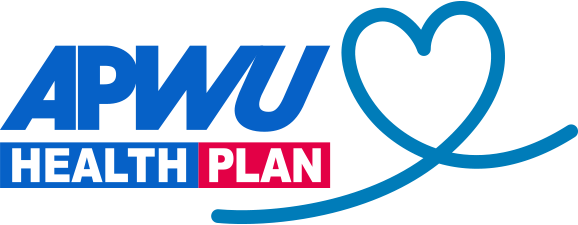Dietary fat is an essential nutrient our bodies need to work properly. In addition to providing energy, fats help maintain body temperature, insulate vital organs, and absorb many vitamins and minerals. But the news about dietary fats can be confusing. Sometimes it seems like the guidelines about good fats vs. bad fats—or how much fat we should consume—change by the day.
When it comes to making heart-healthy eating choices about fat, the first step is to understand the different types of dietary fats.
Types of dietary fat
Our diets contain four main types of fat:
Saturated fats occur naturally in many foods. They are often called solid fats because they’re usually solid at room temperature. The majority come from animal sources, but some plant-based oils are high in saturated fat.
Foods that contain saturated fat include:
- Beef
- Pork
- Poultry with skin
- Lamb
- Cream
- Butter
- Lard
- Cheese
- Milk (whole, 2%)
- Ice cream
- Baked goods
- Fried foods
- Palm oil
- Coconut oil
Trans fats occur naturally in some foods, but most are found in processed foods. Artificial trans fats are made when hydrogen is added to vegetable oils to make them more solid. The process is called partial hydrogenation.
Some food suppliers use trans fats because they’re easy to work with, inexpensive, and long lasting. Trans fats also give foods a desirable flavor and texture. Fast-food chains use oils with trans fats in deep-fryers because the oil can be used over and over again.
It’s not always easy to tell if a packaged food contains trans fats. Nutrition Facts panels can list foods as containing “0 grams of trans fats” as long as they contain less than 0.5 grams of trans fats per serving. But you can spot trans fats by looking for “partially hydrogenated oils” on the ingredients list. Any packaged food that contains partially hydrogenated oils contains trans fats.
Foods that contain trans fats include:
- Fried foods
- Doughnuts
- Baked goods
- Cakes
- Pie crusts
- Biscuits
- Frozen pizza
- Cookies
- Crackers
- Microwave popcorn
- Stick margarines
- Icings
Unsaturated fats are usually liquid at room temperature but start to turn solid when chilled. There are two types of unsaturated fat:
Monounsaturated fats are found in a variety of plant-based foods and oils, including:
- Olive oil
- Canola oil
- Peanut oil
- Safflower oil
- Sesame oil
- Avocados
- Peanut butter
- Nuts and seeds
Polyunsaturated fats are found mostly in plant-based foods and oils, including:
- Soybeans and soybean oil
- Corn oil
- Sunflower oil
- Walnuts
- Sunflower seeds
- Tofu
What’s the recommended daily intake of fat?
For healthy adults, the American Heart Association recommends limiting your dietary fat to no more than 20 to 35 percent of your total daily calories. For example, if you eat 2,000 calories a day, 400 to 700 calories can come from dietary fat—or about 44 to 78 grams of fat per day.
How much saturated fat per day?
Eating foods that contain saturated fats can raise your “bad” (LDL) cholesterol and increase your risk for heart disease and stroke. That’s why the American Heart Association encourages healthy adults to limit saturated fats and choose healthier options.
The Dietary Guidelines for Americans published by the U.S. Departments of Agriculture and Health and Human Services recommends consuming less than 10 percent of calories per day from saturated fats. If you eat 2,000 calories a day, that’s 200 calories—or about 22 grams of saturated fat per day.
However, if your doctor has recommended that you lower your cholesterol, the American Heart Association suggests further limiting your saturated fat intake to 5 to 6 percent of calories a day. If you eat 2,000 calories a day, that’s 120 calories—or about 13 grams of saturated fat per day.
How much trans fat per day?
Eating trans fats can raise your “bad” (LDL) cholesterol and lower your “good” (HDL) cholesterol. Trans fats are also associated with a higher risk of developing heart disease, stroke, and type 2 diabetes. Moreover, the U.S. Food and Drug Administration (FDA) has determined that partially hydrogenated oils are no longer Generally Recognized as Safe (GRAS) in human food.
To reduce the trans fats in your diet, cut back on foods that contain partially hydrogenated vegetable oils and prepare lean meats and poultry without added trans fats.
Limiting saturated fats and trans fats
Consumed in moderation, monounsaturated fats and polyunsaturated fats can have a beneficial effect on your heart and improve your “good” (HDL) cholesterol. The key is to replace the saturated fats and trans fats in your diet with foods higher in unsaturated fats.
Use the Nutrition Facts label to find out how much fat is in the foods you eat. Labels show the amount of total fat, saturated fat, and trans fat in one serving.
Foods that are rich in fat usually contain a combination of fatty acids, so it can be hard to eliminate just one type of fat from your diet. Following these tips from the American Heart Association and the Mayo Clinic can help you cut back on “bad” fats and add more “good” fats to your diet:
- Eat more fruits, vegetables, whole grains, low-fat dairy products, and nuts.
- Eat at least two servings of fish per week. Salmon, mackerel, herring, lake trout, sardines, and albacore tuna are all good sources of essential omega-3 fatty acids. (A serving is about 3.5 ounces of cooked fish.) However, children and pregnant women should make informed choices when it comes to fish that is healthy and safe to eat.
- Use natural vegetable oils, such as canola, safflower, sunflower, and olive oil.
- Drink fat-free (skim) or low-fat (1%) milk instead of 2% or whole milk.
- Eat skinless poultry and lean cuts of meat, and avoid red meat and cuts of meat with visible fat.
- Add low-fat cheese to homemade pizza, pasta, and mixed dishes.
- In recipes, use low-fat plain yogurt instead of cream or sour cream.
- Use soft margarine (liquid or tub varieties) instead of butter or harder stick forms of margarine.
- Use oil-based dressings and spreads on foods instead of butter, stick margarine, or cream cheese.
- Choose processed foods made with non-hydrogenated vegetable oils and avoid foods made with partially hydrogenated or hydrogenated oils.
- Look for “0 g trans fats” on Nutrition Facts labels and no hydrogenated oils in the ingredients list.
- Limit sugary foods and beverages.
- Avoid baked goods made with shortening or partially hydrogenated vegetable oils (doughnuts, cookies, crackers, muffins, pies, cakes).
- Cut back on fried foods (French fries, fried chicken).



